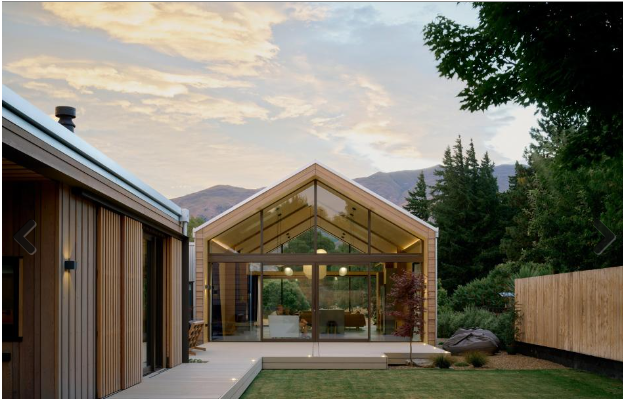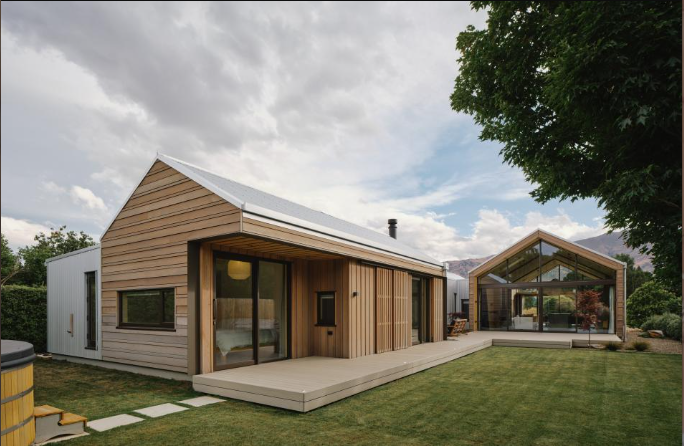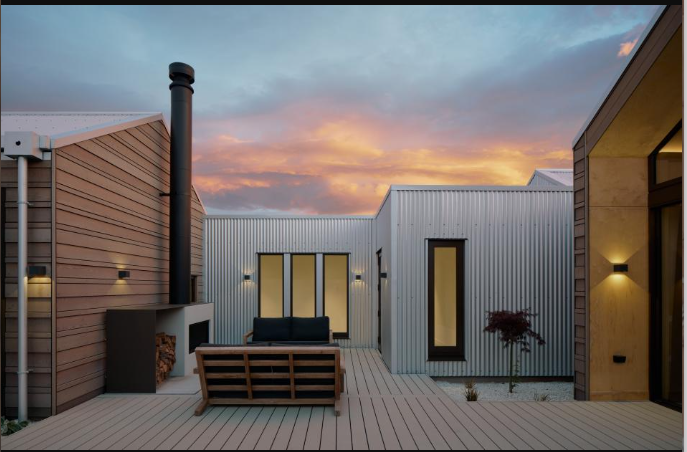
This family home embodies simplicity and warmth, drawing inspiration from the rugged charm of mountain huts but maintaining a refined appearance.
The owners envisioned a simple, modest structure that was calm, unfussy and had a Japanese aesthetic.
It also had to comfortably host multiple families during holidays, while not feeling too expansive when occupied by only a couple.
To achieve all this, they approached Studio Pacific Architecture in Wellington.
The firm won a housing award in the New Zealand Institute of Architects’ southern awards for its work on the Wanaka project.
The home’s form and exterior materials reference the local context, with horizontal timber cladding and corrugated sheet steel skilfully articulated to add texture and depth.
Inside, exposed timber linings and neutral finishes create a backdrop that celebrates the play of light throughout the day.
The view through the main living pavilion to a local park.
The view through the main living pavilion to a local park.
The 250sqm house is divided into

The 250sqm house is divided into three pavilions which are connected by a gallery — a design approach that captures the feel of a mountain hut while catering for both large and small gatherings.
The award judges described the layout as a “rousing dialogue between two gabled forms”.
“The main living form is open, timber-lined and glazed at each end while the other is a corrugated, closed-off form for the garage.
The yoga studio can be used for sleeping when the whole family comes to stay.
The yoga studio can be used for sleeping when the whole family comes to stay.
“Further up the gently-rising site is a third volume — the bedroom wing — where heights and levels soften to present a relaxed atmosphere with carefully-considered details.”
The pavilions are arranged in a way that creates sheltered outdoor areas and a mix of shaded and sunny spaces that can be used as seasons change.

Glazed openings are positioned to offer views across the site, create glimpses through adjacent spaces and capture the changing light.
Materials were selected for durability, recycled content and to reduce the embodied carbon of the construction phase.
Composite decking, made of 100% recycled materials, was seen as a sustainable, low-maintenance option.
The landscaping is “intentionally restrained”.
The architects said the project coincided with the Covid-19 pandemic, which affected their ability to obtain the required materials and make site visits.
However, they had an excellent relationship with Dunlop Builders, which was adept at managing the works on site and souring materials: “It was a real team effort, with great results all round.”


